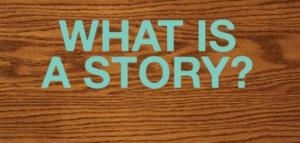The Internet is an extremely powerful tool for anyone working with communication and education. A wide range of web tools, including storytelling tools, have emerged that make it possible to tell stories online, and create appealing stories with relevant content and data. A flow chart maker is one such graphical method of presenting a process.
This tool is the perfect ingredient to engage your audience with relevant, easy-to-share content, by telling stories through images, audios and drawings. Many institutions and companies have developed and searched for this capacity in people, since it is a matter of carrying out good communication and expression of ideas.
It is the most powerful tool for passing on knowledge, creating relationships and selling, because people identify and engage with stories, paying greater attention and remembering the content which you’re presenting. It is also a matter of how we look at different facts and create opinions, since we are influenced by stories and the way we interpret them.
What is a story?
A story is a narrative of an event, or sequence of events. It can be factual or not, but a good story always has a core element of truth, even a fictional one. The message that the story conveys must be genuine, consistent and authentic.

A story can include emotion, characters and sensory details to hard facts. This is how a good story hooks us, pulls us into the plot and manages to convey its main message in a powerful way. If you pay attention, every brand is filled with remarkable episodes. We are surrounded by stories, and our lives are a collection of them.
Even if it is an unconscious action, whenever we tell a story we want to say something more with it. It’s there, hidden between the lines. The story is an attempt to organize and make sense of reality.
The characteristics of good storytelling
There are no ready-made recipes for a story, but some aspects have proven effective for many years, and some indisputable components can help you create an excellent storytelling experience for both the reader and the writer.

Good stories need to keep the reader engaged and interested in what is yet to come, arouse curiosity and increase knowledge, be relatable for all readers and depict the emotions and experiences that most people go through or have gone through, following a succinct organization that helps to convey the main message and helps readers to absorb key ideas.
A good narrative also needs to be memorable, whether through inspiration, scandal, or humor: good stories stick in the reader’s mind.
5 elements that will help you create perfect storytelling
Creating characters and developing the narrative and archetypes involve a lot of details, but we will focus here on the 5 main elements of storytelling for building brands, whether for your company or your personal brand. Let’s look at what you really need to reach your audience:
1 – Desire: every story has a driving purpose, a motivation that sets in motion all ensuing events. So you need to have complete clarity on this and illustrate it right at the beginning of your story.
2 – Problem: this is the obstacle towards achieving your desire. It can be external, internal or philosophical, as a conflict between good and evil. This trait always goes hand in hand with desire, even if it doesn’t seem like it at first glance.
The problem is something concrete that you have to deal with in your story, and it should also be presented at the beginning because this is where the ensuing actions in your story will take place.
3 – The plan: this is made up of the steps you will need to take to put the mission or project into practice. It needs to be simple and clear, almost like a checklist, so it is easy to put the concepts into action.
When storytelling, try to help your audience understand what the next step is, what the solutions are, what to do and how the story will have a real impact on their lives.
4 – CTA: storytelling also can include a call to action. The listener is involved with your story, so take advantage of this relationship that you’ve built and tell them what to do. This CTA will usually make listeners leave their comfort zone, which could lead, for example, to making a purchase.
Your audience needs to notice something that makes them feel like they need to change and find a solution to their problem.
5 – Make your audience think about success and failure: “failure” means everything that can go wrong if the person doesn’t make the decision you suggest in your CTA.
These failures will depend a lot on your story and the context of your content, but the important thing is to highlight what the person will be missing out on if they do not make this decision.
To wrap up your story with a happy ending, show the benefits which your listener will receive from the transformation. If your audience steps out of their comfort zone, what big perks will they receive?
Remember that the best part of a story always comes at the end. Explore the benefits so the person can really envision the transformation which they can aspire to.
Some story archetypes are very effective for connecting with your audience. Among the most common is the “Hero’s Journey”. In this model, the hero and true protagonist of this story will always be your audience, with you as the mentor.
The “Common Audience Enemy” is also a popular story archetype, used to blame your audience’s problems on something which is common to all. By doing this, you will take a weight off your client’s shoulders and put it on something abstract, represented by something collective – never by an individual.
When crafting these narratives, consider consulting with a branding creative agency to ensure your storytelling aligns with your brand’s identity and resonates effectively with your target audience.
Finally, consider these rules when storytelling:
- Know your audience;
- Define your core message;
- Decide what kind of story you are telling;
- Establish your CTA;
- Choose your media;
- Write.
Storytelling tools are powerful in marketing. Telling stories is not their only function. By creating an engaging narrative, your audience won’t even realize that your goal is to sell something… but by the end of the story they’ll be ready to buy anyway.
Also Read This: 10 Savvy Ways to Promote Your Brand Effectively











